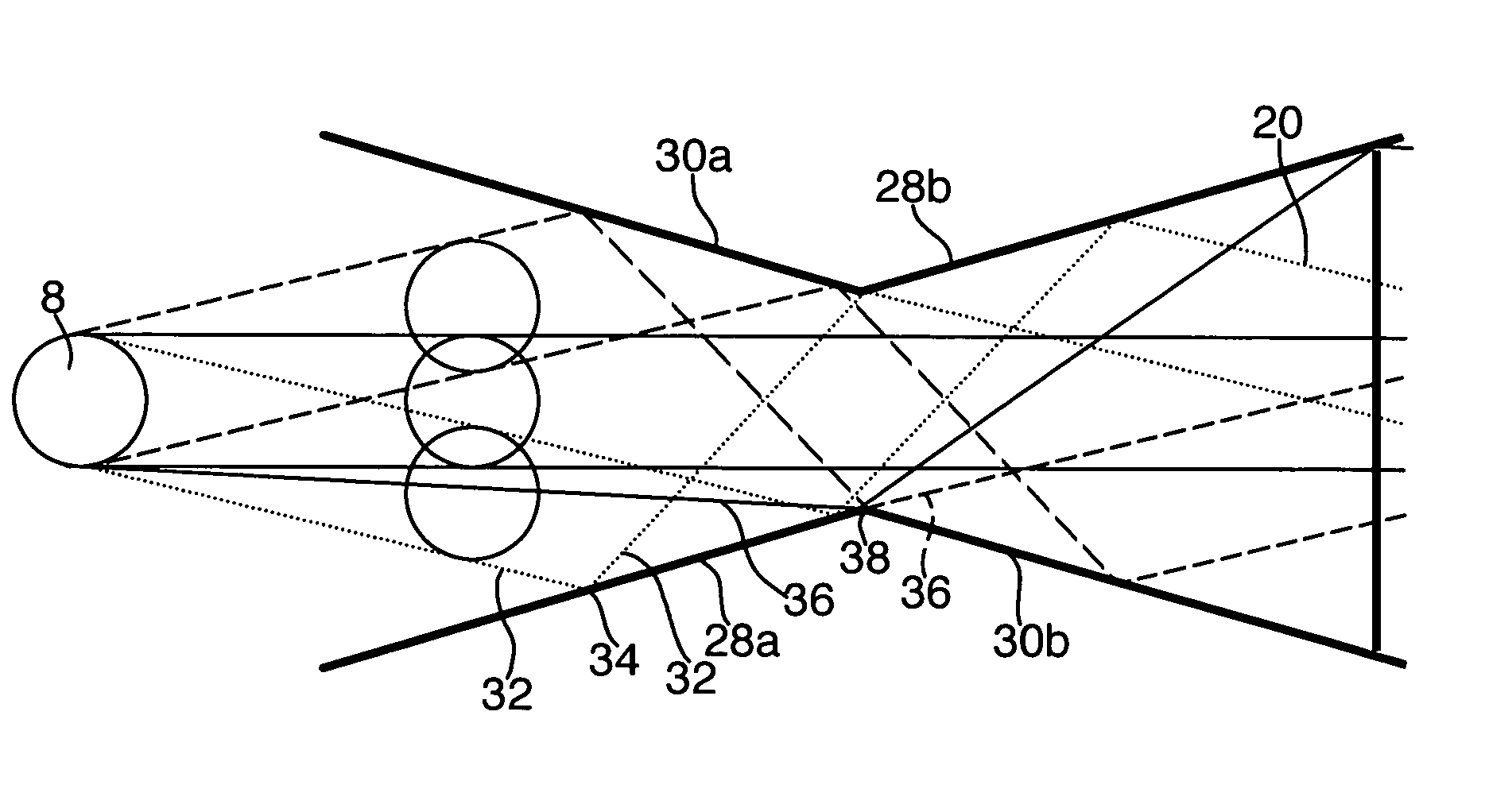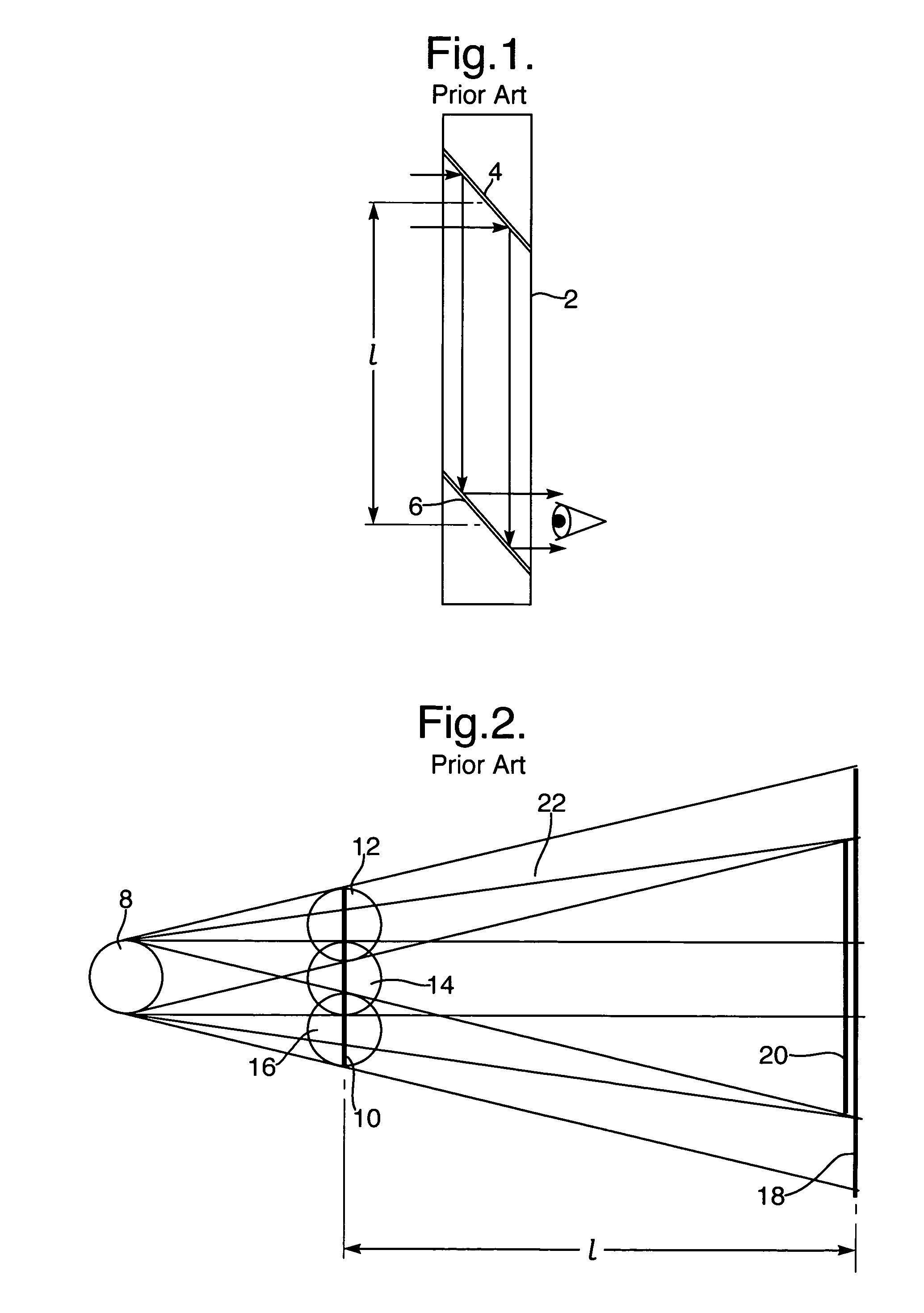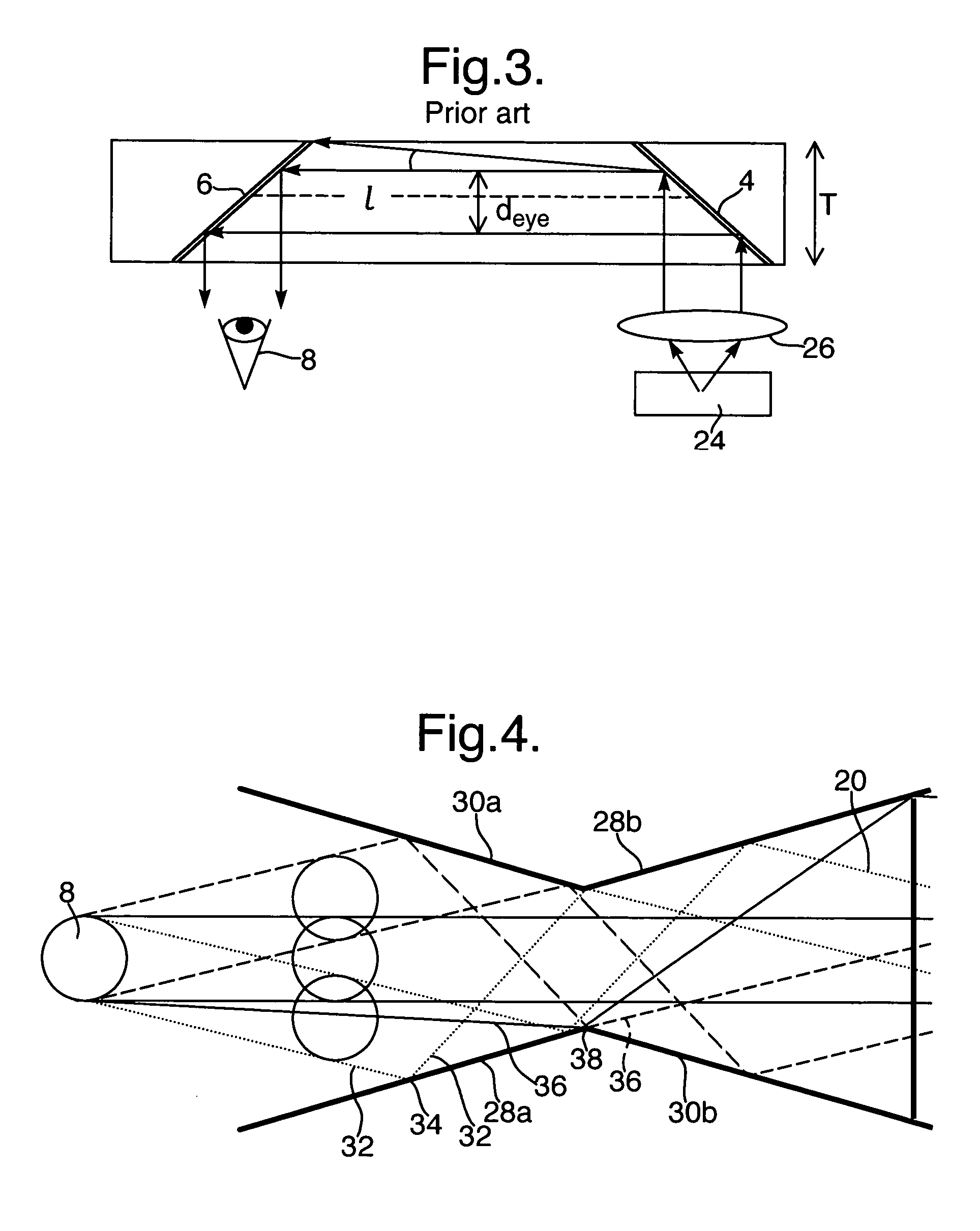Optical devices particularly for remote viewing applications
a technology for remote viewing and optical devices, applied in the field of optical devices, can solve the problems of limited performance, heavy hud systems, and many significant drawbacks of the current hud system, and achieve the effects of convenient structure and fabrication, compact and simple modules, and high fov
- Summary
- Abstract
- Description
- Claims
- Application Information
AI Technical Summary
Benefits of technology
Problems solved by technology
Method used
Image
Examples
Embodiment Construction
[0022]Remote viewing optical systems, and periscopes in particular, are optical systems designed to displace the object space reference point away from the eye space reference point. This allows the observer to look over or around an intervening obstacle, or to view objects in a dangerous location or environment while the observer is in a safer location or environment. A submarine periscope is the typical example, but many other applications, both military and non-military, are envisioned.
[0023]FIG. 1 illustrates the simplest form of a prior art periscope 2, having a pair of optical elements 4 and 6, e.g., a pair of folding mirrors, which are used to allow a viewer to see over a nearby obstacle. The basic geometry of this embodiment imposes limitations on the performance of the system. This is especially true for systems with a very wide FOV and a constraint on the distance, l, between the folding-in optical element 4 and the folding-out element 6.
[0024]FIG. 2 illustrates an unfolde...
PUM
 Login to View More
Login to View More Abstract
Description
Claims
Application Information
 Login to View More
Login to View More - R&D
- Intellectual Property
- Life Sciences
- Materials
- Tech Scout
- Unparalleled Data Quality
- Higher Quality Content
- 60% Fewer Hallucinations
Browse by: Latest US Patents, China's latest patents, Technical Efficacy Thesaurus, Application Domain, Technology Topic, Popular Technical Reports.
© 2025 PatSnap. All rights reserved.Legal|Privacy policy|Modern Slavery Act Transparency Statement|Sitemap|About US| Contact US: help@patsnap.com



